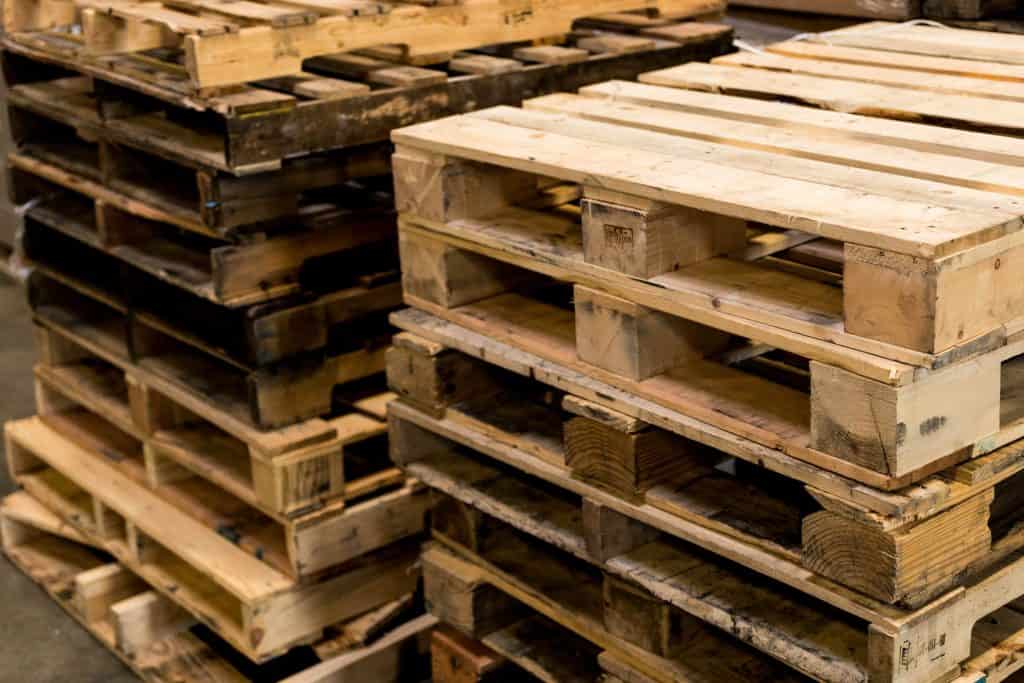If you work in a warehouse, you’ve likely encountered substantial amounts of dirt.
Ensuring your warehouse stays clean can be challenging. Keeping warehouse dust away can feel like an infinite treadmill session, but with the right techniques and tools, it doesn’t have to be.
There are numerous sources of warehouse dust, such as wood pallets, forklift tires and forklift exhaust.

It can also enter the warehouse from the outside, such as on the wheels of trucks entering the property.
Is Warehouse Dust Bad for You?
Depending on the severity, warehouse dust can be bad for you. It can cause several health problems, such as dermatitis, allergic reactions, and asthma attacks.
Over the long term, it can also cause respiratory issues such as bronchitis, chronic obstructive pulmonary disease (COPD), and lung cancer.
The most significant risk from warehouse dust is from fine particles, which are often invisible to the human eye. While larger dust particles are filtered by the structures in your nose and airways, finer particles can penetrate the deepest parts of your lungs.
The type of dust can also affect the risk warehouse dust poses to your health. For example, asbestos dust increases the risk of diseases like:
- Lung cancer
- Mesothelioma
- Asbestosis
Further, silica dust can cause inflammation and scarring of the lungs and, in severe cases, silicosis.
Sources of Dust in the Warehouse
There are numerous sources of dust in a warehouse, and they often depend on the type of warehouse. Some common sources include:
- Wearing of tires on forklifts and vehicles entering the warehouse from the outside (causes black dust on the floor and walls)
- Airborne dust that enters the warehouse from the outside
- Silica dust from the wearing down of floors
- The natural decay of wood pallets
- Microscopic pieces of cardboard boxes that break away when they’re handled
- Soot from vehicle exhaust, including forklift exhaust
- As a by-product of tasks associated with regular warehouse maintenance
- As a natural by-product of the manufacturing process
How To Prevent Dust From the Warehouse

Here are some ways to prevent dust from entering a warehouse:
- Invest in a dust control system. This is an industrial ventilation system designed to filter out dust from the air in your warehouse.
- Minimize the influx of dust from the outside. This can involve installing temperature control doors, airlock zones, and industrial curtains.
- Use a fogging system. These systems spray tiny drops of water into the air, which stick to airborne dust particles. This makes the particles heavy and causes them to fall to the ground, so it’s easier to sweep them away.
- Cover surfaces to prevent dust from gathering on them. This has the added effect of making machinery more effective, as dust can hamper the working of numerous delicate parts of a machine. It also makes products look cleaner and reduces the risk of accidentally sending dusty products to clients.
- Limit the movement of materials. The more traffic in a warehouse, the greater the chance dust will form. Review the traffic flow and reduce any unnecessary activities, especially those that involve forklifts and other vehicles. Not only does this reduce the dust in the space, but it also makes your warehouse more effective as your employees are no longer spending time on unnecessary cleaning tasks.
- Segregate areas prone to dust. If some areas of the warehouse are particularly prone to attracting dust (whether due to their location near the doors or the type of activity in that section), partitioning them from the rest of the warehouse can make cleaning easier. You can use airlocks or industrial curtains to achieve this.
- Clean and inspect the warehouse regularly. Cleaning dust from the warehouse should be a regular part of warehouse maintenance. This can include giving employees the responsibility of keeping their areas clean, as well as larger-scale actions, such as using vacuum systems. Conduct regular inspections to ensure the warehouse is maintained at an optimal level of cleanliness.
- Install a belly plate on forklifts. This prevents them from picking up dust from the floor and scattering it into the air, increasing the airborne concentration of dust particles.
How To Clean a Dusty Warehouse Floor
- Sweep the floors first. Sweeping gets rid of large debris and loses dust on the floors. If left on the floors, this dust and debris could damage your floor scrubbing machine. Once the floors have been swept, run a scrubbing machine over the area.
- Use an industrial vacuum system to complete the cleaning. Larger warehouses should consider investing in a central system. However, for smaller facilities, portable systems will do the job.
As discussed, cleaning your floors is only one step in keeping your warehouse dust-free. You also need to take steps to reduce or eliminate airborne dust and clean surfaces frequently to get rid of dust that may have accumulated on them.
Protecting Yourself From Warehouse Dust

Eliminating warehouse dust can be challenging, and most warehouses work to reduce it rather than getting rid of the dust completely. However, this means you’re still exposed to the dangers of dust daily (although your exposure is reduced).
Fortunately, it’s possible to take steps to protect yourself from the remaining dust in your workplace.
- Wear protective gear. Generally, your employer will dictate what gear you need to wear. This can include safety goggles and respirators.
- However, even if you’re not required to wear protective equipment, consider wearing a dust-filtration mask, especially if you are part of the cleaning personnel.
- If you have to wear a respirator, ensure it fits your face correctly and is the correct respirator for your job. Follow equipment guidelines for wearing respirators, including ensuring you’re clean-shaven at all times.
- Use the eyewash station if you feel an irritation in your eyes. If dust particles get into your eyes, it can cause blurred vision and corneal abrasions and leave your eyes feeling itchy. Using the eyewash station will flush the dust out of your eyes immediately before it can do any significant damage.

- Follow all the safety guidelines recommended by your workplace.
- Wash your hands thoroughly before you go home or eat at work. This includes scrubbing under your nails. Ideally, you should also wash your face.
- If possible, shower and change clothes at work. Dust in the warehouse will stick to your clothes, and showering and changing before returning home means you won’t bring that dust back to your house with you.